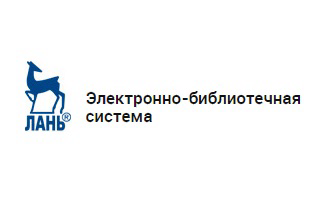| УДК 622.831.3:622.24(571.16) | DOI: 10.21440/0536-1028-2021-7-16-24 |
|
Introduction. The World Stress Map project proves that horizontal stress orientation determination is a global task essential for the majority of geomechanical calculations. However, there is scant data on stress orientations in the territory of Russia at the moment. The task is therefore highly relevant.
Research objective is to determine the orientations of maximum and minimum horizontal stresses by separate areas of the Tomsk region and build a map of horizontal stresses.
Method of research. The basis for determining the orientations of horizontal stresses is the theory of drilling-induced fracture and borehole breakouts occurrence. The maximum stress orientation coincides with the drilling-induced fracture orientation, whereas the minimum stress orientation coincides with the borehole breakouts orientation or is perpendicular to the maximum stresses.
Results. Research results are compiled in a summary table containing mean orientations of horizontal stresses by areas and a map of horizontal stress orientations.
Conclusions. A summary map of maximum horizontal stress strike azimuths has been constructed. The stresses are of similar orientation in every well under consideration, except for a well in the North-Shingin area. The average value of maximum horizontal stress orientation has made up 337° northwest and 157° southeast.
Keywords: drilling-induced fracture; stress orientation; geomechanics; borehole breakout; microimager.
REFERENCES
- Heidbach O., Rajabi M., Reiter K., Ziegler M., WSM Team. World stress map database release 2016. GFZ Data Services. Available from: http://doi.org/10.5880/WSM.2016.001
- Lushev M. A., Pavlov V. A., Korelskii E. P., Patutin A. V. Horizontal stresses orientation of the Earth's upper crust in Russian Federation according to instrumental measurements in wells. Gornyi informatsionno-analiticheskii biulleten (nauchno-tekhnicheskii zhurnal) = Mining Informational and Analytical Bulletin (scientific and technical journal). 2017; 3: 337–349. (In Russ.)
- Kaluder Z. et al. First high-rate hybrid fracture in Em-Yoga Field, West Siberia, Russia. Offshore Technology Conference-Asia. Offshore Technology Conference, 2014.
- Lukin S. V., Esipov S. V., Zhukov V. V., Ovcharenko Iu. V., Khomutov A. Iu. Borehole stability prediction to avoid drilling failures. Neftianoe khoziaistvo = Oil Industry. 2016; 6: 70–73. (In Russ.)
- Marino S. et al. Integrated approach to hydraulic fracturing of Achimov Formation in Western Siberia. SPE Russian Oil and Gas Conference and Exhibition. Society of Petroleum Engineers, 2010.
- Konstantinovskaya E. et al. 3D geomechanics modeling and shale anisotropy for wellbore stability and horizontal well optimization, Middle Nazym Field, Western Siberia, Russia. SPE Russian Petroleum Technology Conference and Exhibition. Society of Petroleum Engineers, 2016.
- Melnikov L. et al. Defining potentially-productive intervals and evaluating petrophysical properties of the Tight-Oil Bazhenov Formation in Western Siberia using a suite of modern wireline logs. SPE Russian Petroleum Technology Conference. Society of Petroleum Engineers, 2015.
- Lozanovich E. et al. Experience in the use of horizontal wells of various designs for the development of hard-to-recover oil reserves in LLC Lukoil–Western Siberia. SPE Russian Petroleum Technology Conference. Society of Petroleum Engineers, 2019.
- Khasanov M. M., Zhukov V. V., Ovcharenko Iu. V., Timofeeva T. N., Lukin S. V. A geomechanical approach to minimising sanding risk. Neftianoe khoziaistvo = Oil Industry. 2016; 12: 48–51. (In Russ.)
- Zoback M. D., Barton C. A., Brudy M., Castillo D. A., Finkbeiner T., Grollimund B. R., Moos D. B., Peska P., Ward C. D., Wiprut D. J. Determination of stress orientation and magnitude in deep wells. International Journal of Rock Mechanics and Mining Sciences. 2003; 40(7–8): 1049–1076.
- Dubinia N. V. An overview of wellbore methods of investigating stress state of the upper layers of the EarthТs crust. Fizika Zemli = Physics of the Solid Earth. 2019; 2: 137–155. (In Russ.)
- Fjaer E., Holt R. M., Horsrud P., Risnes R. Petroleum related rock mechanics. Elsevier, 2008.
- Dubinia N. V., Ezhov K. A. In-situ horizontal stress estimation based on the geometrical properties of fractures in well vicinity. Geofizicheskie issledovaniia = Geophysical Research. 2017; 18(2): 5–26. (In Russ.)
- Zoback M. D. Reservoir geomechanics. Cambridge University Press, 2010. 505 p.
- Surkov V. S., Zhero O. G. Basement and development of the West Siberian Plain’s platform mantle. Moscow: Nedra Publishing; 1981. (In Russ.)
- Kontorovich V. A. Tectonics and oil and gas occurrence of the Mesozoic-Kainozoic sediments of the southeast regions of West Siberia. Novosibirsk: SB RAS Publishing; 2002. (In Russ.)
For citation: Antonov A. E., Shadrin A. S., Konoshonkin D. V., Rukavishnikov V. S., Petrova D. S. Determination of horizontal stresses orientation in the area of the Tomsk region. Izvestiya vysshikh uchebnykh zavedenii. Gornyi zhurnal = News of the Higher Institutions. Mining Journal. 2021; 7: 16–24. DOI: 10.21440/0536-1028-2021-7-16-24









